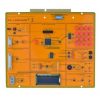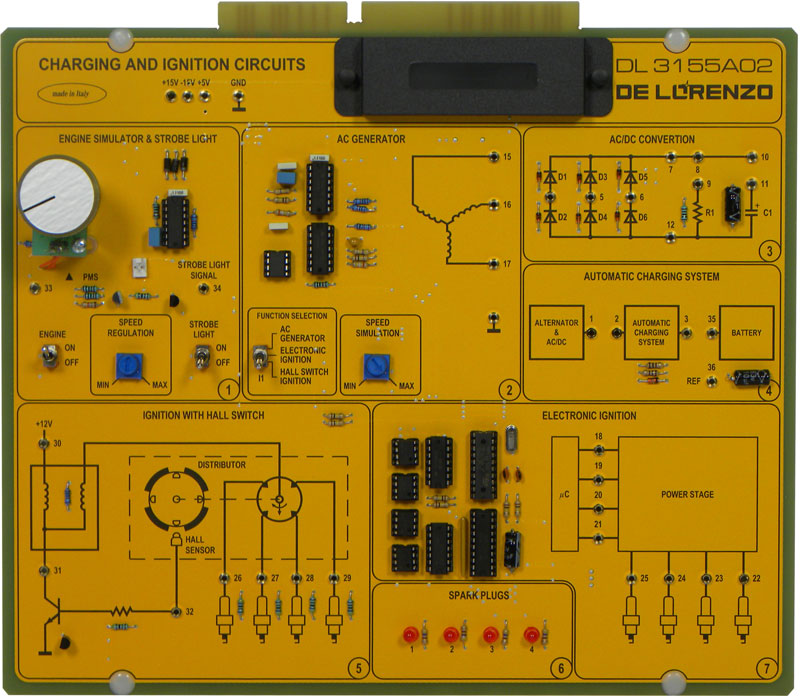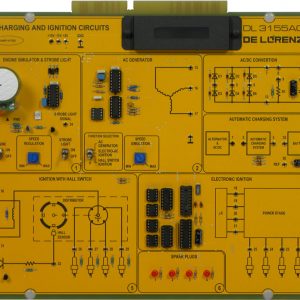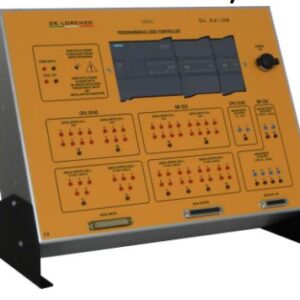– didactic equipment: circuit blocks: alternating quantities, resistive circuit, capacitive circuit, R-C circuit (series and parallel), inductive circuit, R-L circuit (series and parallel), series resonant circuit, parallel resonant circuit, low-pass filter (R-C), high-pass filter (C-R), low-pass filter (L-R),high-pass filter (R-L), pass-band filter- theoretical topics: sinusoidal alternating currents and voltages, vector and symbolic representation of the sinusoidal electric quantities, product of a sinusoidal quantity by a constant, sum and difference of sinusoidal quantities, product of two sinusoidal quantities, product of a sinusoidal quantity by a complex number, elementary bipoles: R, L, C; series and parallel of the bipoles: R-L, R-C, R-L-C; oscillating circuits: frequency response of the ac circuits, low-pass filter, high-pass filter, pass-band filter. Fault simulation. It must be possible to perform the following experiences: Alternating quantities, Resistive circuit, Capacitive circuit, R-C circuit (series and parallel), Inductive circuit, R-L circuit (series and parallel), Series resonant circuit, Parallel resonant circuit, Low-pass Filter (R-C) High-pass filter (C-R), Low-pass Filter (L-R) High-pass filter (R-L), Pass-band filter. The faults must be inserted by software and by microswitches mounted on the board. The module must be provided with a EISA BUS 31+18 INTERFACE for connection to power supply and PC, with a software able to allow the study of theoretical topics through PC with hyper textual navigation according to the HTML standard. Connections and test points by 2mm terminals.
Dimensions of the module: 297x260mm.
The module must be supplied with a theoretical and practical manual

















